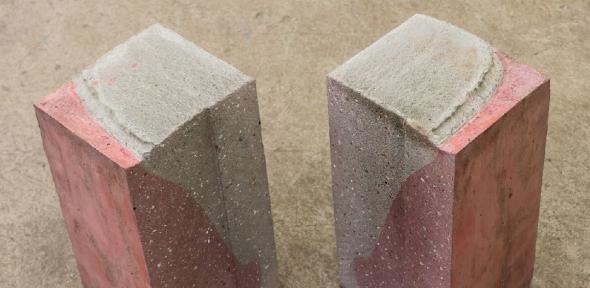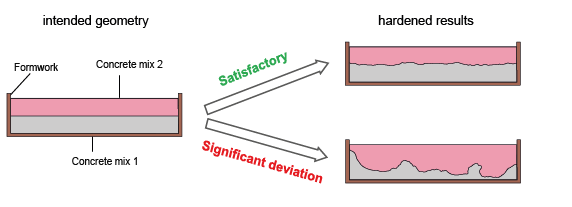
Fresh State Stability of Multi-Mix Elements
Functionally graded concrete is a promising technology for minimising cement use. However, one challenge when fabricating graded concrete is the control of the fresh state deformations of multiple mixes cast into the same mould. This applies not only to horizontally cast elements, where different concrete mixes are placed in layers, and also to vertically cast elements, where different concrete mixes are placed side-by-side. Our research seeks to identify acceptable differentials between mixes to ensure that the placement of material is as intended. To date, the rheology, manufacturing process and density have been found to be significant.
Selected Publications
| Brault A, Lees JM. (2020) Wet casting of multiple mix horizontally layered concrete elements. Construction and Building Materials, 247, 118514. https://doi.org/10.1016/j.conbuildmat.2020.118514 |
|
Torelli G, Giménez Fernández M, Lees JM. (2020) Functionally graded concrete: Design objectives, production techniques and analysis methods for layered and continuously graded elements. Construction and Building Materials, 242, 118040. https://doi.org/10.1016/j.conbuildmat.2020.118040 |
| Torelli G, Lees JM. (2019) Fresh state stability of vertical layers of concrete. Cement and Concrete Research, 120, 227-243. https://doi.org/10.1016/j.cemconres.2019.03.006 |


